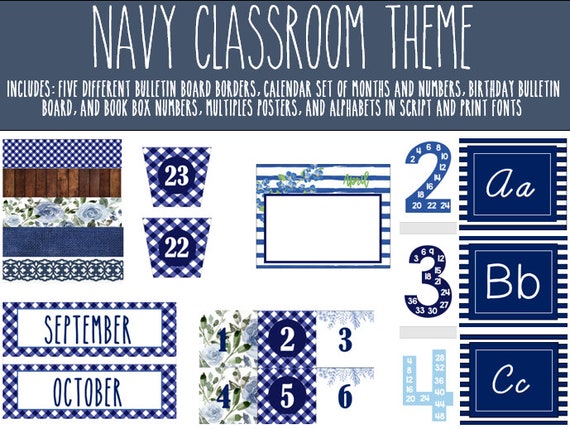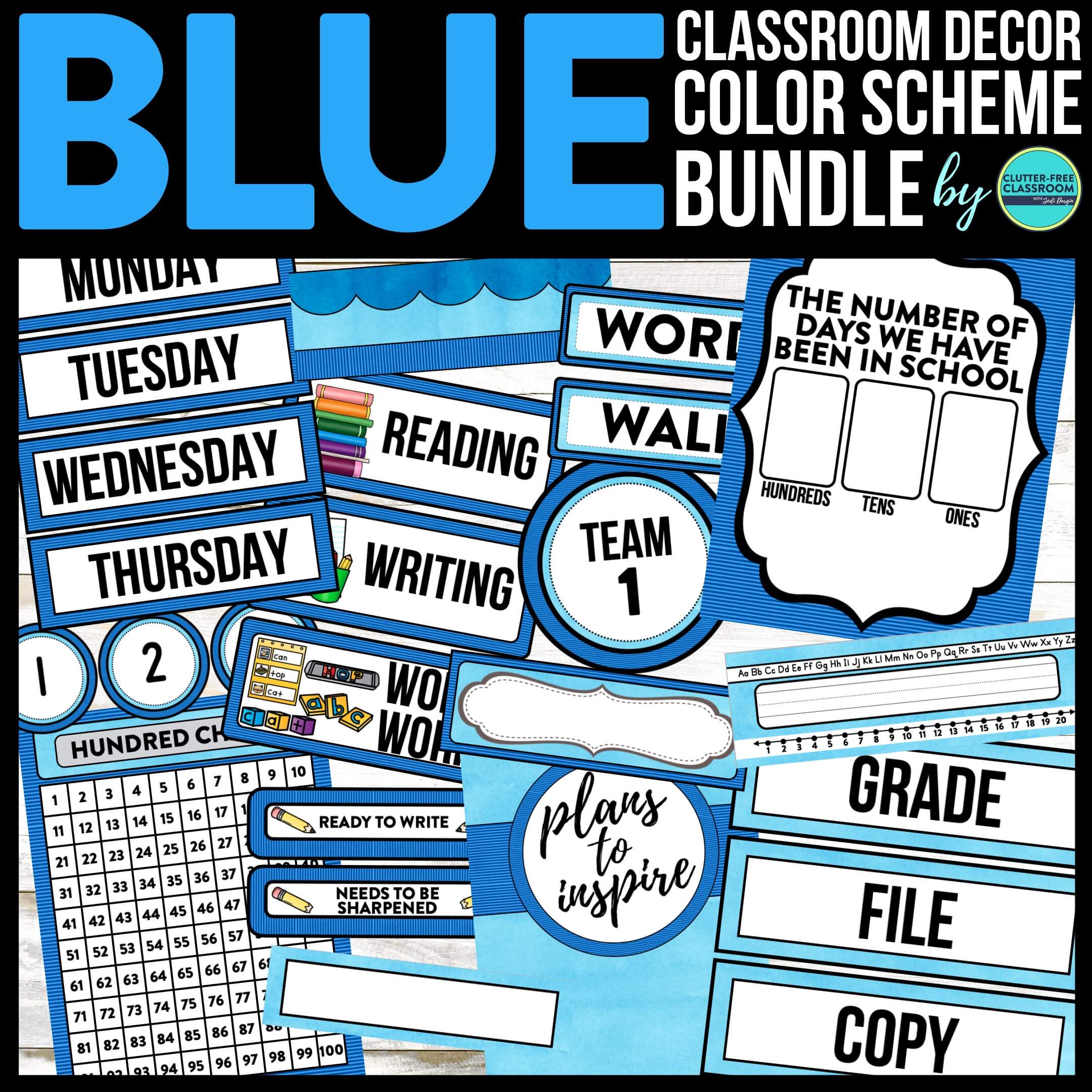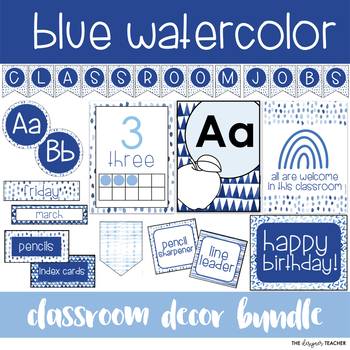Choosing the right decor for your classroom can significantly influence the learning environment and the overall mood of your students. As an educator and passionate advocate for effective learning environments, I’ve seen firsthand how color can impact student engagement and well-being. In this comprehensive guide, we will delve into the world of blue classroom decor, exploring its benefits, design ideas, and tips to create a captivating atmosphere that fosters learning and creativity.
Why Choose Blue for Classroom Decor?
When considering colors for a classroom, blue is a top choice for many educators. Here are some compelling reasons to incorporate blue into your classroom decor:
- Calming Effect: Studies have shown that blue can promote a sense of calm and focus, making it ideal for learning environments.
- Boosts Creativity: Lighter shades of blue can stimulate creative thinking, encouraging students to think outside the box.
- Enhances Learning: Blue can improve concentration and retention, helping students absorb information more effectively.
Different Shades of Blue and Their Impact

The world of blue is vast, and each shade can create a different ambiance. Here’s a breakdown of popular shades and their effects:
| Shade | Effect | Best Used In |
|---|---|---|
| Sky Blue | Invokes tranquility and open-mindedness | Reading corners, collaborative spaces |
| Royal Blue | Stimulates intellectual energy | Study areas, visual displays |
| Turquoise | Encourages communication and creativity | Group work areas, art corners |
| Powder Blue | Creates a serene environment | Quiet zones, meditation areas |

Blue Classroom Decor Ideas
Now that we’ve explored the psychological benefits of blue, let’s look at how to incorporate it into your classroom decor.

1. Wall Color
The color of your walls sets the foundation for your decor. Here are some options:
- Accent Walls: Consider painting one wall a deep blue to create a focal point while keeping the others a lighter color.
- Murals: Consider commissioning a mural featuring blue skies or ocean themes to inspire imagination.
- Wall Decals: Use blue-themed decals that can be easily removed or changed as needed.

2. Furniture
Choosing blue furniture can significantly alter the room’s ambiance:
- Blue Desks and Chairs: Brightly colored chairs can make the space lively and fun.
- Soft Seating: Adding blue bean bags or cushions can create cozy reading nooks.

3. Textiles and Accessories
The right textiles can enhance the blue theme:
- Curtains: Light blue or patterned curtains can bring in natural light while complementing your decor.
- Rugs: A vibrant blue area rug can anchor the space and add comfort.
- Throw Pillows: Incorporate various shades of blue in your pillows for added texture.

4. Artwork and Displays
Art can be a powerful medium to incorporate blue into your decor:
- Student Artwork: Frame student work with blue frames for a personalized touch.
- Inspirational Quotes: Create posters with blue backgrounds featuring motivational quotes.

Combining Blue with Other Colors
Blue pairs beautifully with many colors, enhancing its impact. Here are some great color combinations:
1. Blue and Yellow
This combination brings energy and cheer, perfect for elementary classrooms.
2. Blue and Green
The natural harmony of blue and green promotes a calm, serene environment ideal for study zones.
3. Blue and White
A classic combo that evokes cleanliness and clarity, ideal for any space.
4. Blue and Gray
This sophisticated pairing works well in high school and adult education environments, providing a modern look.
Pros and Cons of Blue Classroom Decor
As with any design choice, there are pros and cons to consider:
| Pros | Cons |
|---|---|
| Promotes calm and focus | Can feel cold or distant if overused |
| Encourages creativity | Some shades may clash with specific themes |
| Versatile and trendy | Maintaining a specific shade can be challenging |
Tips for Implementing Blue Classroom Decor
Implementing blue decor in your classroom can be a rewarding experience. Here are some tips from my personal journey as an educator:
1. Start Small
If you’re hesitant, start by introducing small blue elements, such as cushions or wall art, before committing to larger changes.
2. Involve Students
Engage your students in the decorating process. Allowing them to choose decorations fosters ownership and responsibility.
3. Update Seasonally
Consider changing the decor with the seasons or themes to keep the space exciting and fresh.
4. Focus on Functionality
Ensure that your decor choices also serve a purpose. For example, using blue shelving for storage can be both decorative and functional.
Personal Experiences with Blue Classroom Decor
In my teaching career, I transformed a bland classroom into a vibrant learning environment using blue decor. Initially, I painted one wall sky blue, which immediately lightened the space. I added a collection of blue and white artwork created by my students. They loved seeing their work showcased and felt proud of their classroom. The moment I introduced comfortable blue cushions for reading time, I noticed students were more willing to engage with books and share stories. It was a simple change, but it made a significant impact.
Frequently Asked Questions (FAQs)
1. What are some suitable shades of blue for classroom decor?
Some suitable shades include sky blue, royal blue, turquoise, and powder blue. Each offers unique benefits and can be used in different classroom areas.
2. How can I combine blue with other colors without clashing?
Choose complementary colors like yellow, green, white, or gray. Opt for balanced proportions to prevent overwhelming the space.
3. Is blue suitable for all age groups in classrooms?
Yes! Blue is versatile and can be adapted to suit the needs and preferences of any age group, from toddlers to adults.
4. How can I introduce blue decor gradually?
Start with smaller items like decorations or cushions, then transition to larger changes like wall colors or furniture as you feel more comfortable.
5. Can blue decor affect student performance?
Yes, colors influence mood and focus. Blue is shown to enhance concentration and creativity, positively impacting student performance.
Conclusion
Incorporating blue classroom decor can create a nurturing, inspiring learning environment. Through thoughtful design and a dash of creativity, your classroom can transform into a space where students feel calm yet energized, eager to learn and collaborate. Remember, the journey of decorating is unique to each educator. Embrace the process as you explore the beautiful spectrum of blue!